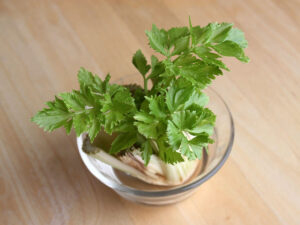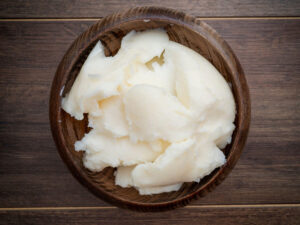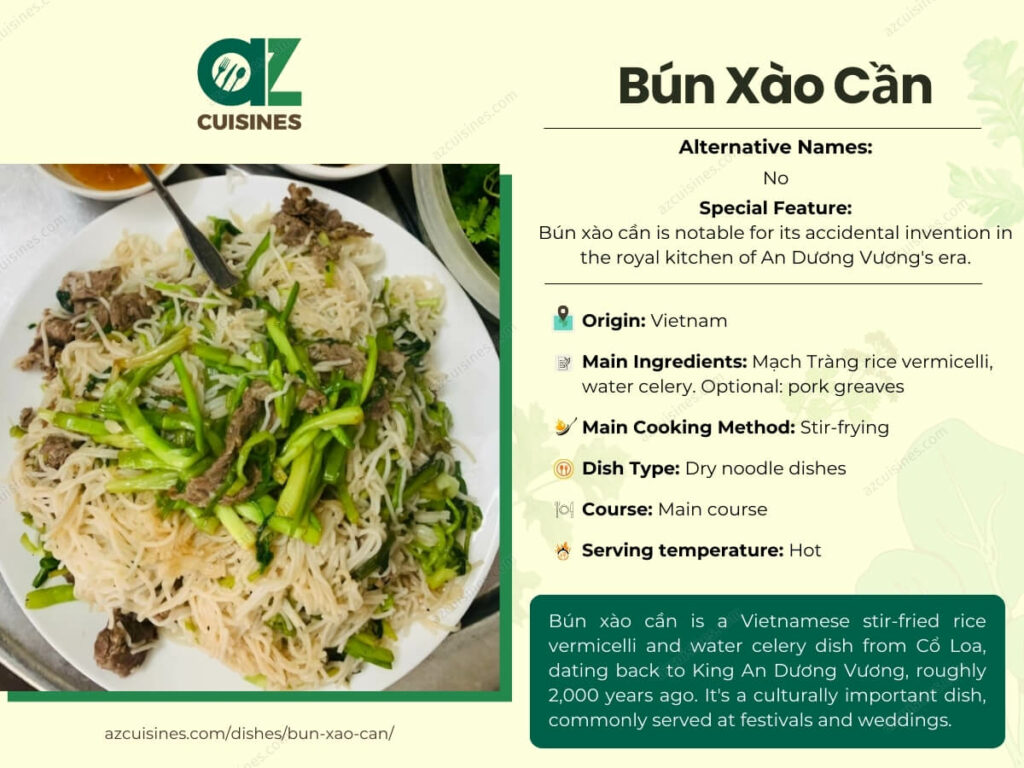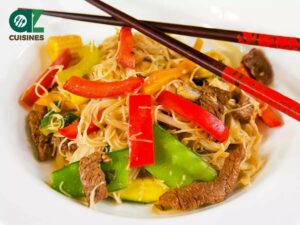Bún Xào Cần: Basic Information
Pronunciation
Alternative Name(s)
Dish Type
Course
Mealtime
Popular Variations
Bún Xào Cần: Ingredients and Preparation
Main Ingredients
Main Cooking Method
Preparation Process
Bún Xào Cần: A Deep Dive
Cultural Significance
Taste
Texture
Aroma
Color
Serving Style
Serving Temperature
Accompaniment
Occasions
Seasons
Special Diets
Calories
Popularity
Popular Similar Dishes
- Bún Xào Thịt
- Bún Xào Hải Sản
- Bún Xào Cải Chua
Popular Dining Area
Bún xào cần is a distinctive Vietnamese noodle dish traditionally associated with Cổ Loa commune, Đông Anh district, Hanoi city, famous for its unique blend of stir-fried rice vermicelli (bún) and water celery (cần).
This dish has deep historical roots, originally created during the era of King An Dương Vương about 2,000 years ago.
Not only a culinary specialty, bún xào cần also bears significant cultural value, often featured in festivals, weddings, and other important local ceremonies.
Let me guide you through the dish’s characteristics, its roots, the importance it holds in cuisine, the components that make it up, its advantages and disadvantages, answers to common inquiries, and dishes that bear resemblance.
Key Points
What Is The Origin of Bún Xào Cần?
The origin of “Bún Xào Cần” traces back to an accidental culinary creation during the time of King An Dương Vương over 2000 years ago. It was first made during the preparations for a royal banquet held to honor Triệu Đà, who came to discuss the marriage of his son Trọng Thủy to Princess Mỵ Châu.
A tired soldier, while preparing for the feast, accidentally created the noodle-like substance by dropping dough into a hot steaming basket. This mistake was turned into a dish by the head chef, who decided to mix these noodle strands with water spinach (rau cần) and leftover fat.
The dish, initially called “món xêu” due to a miscommunication, was later presented at the royal feast, where it was highly praised and became a culinary tradition in Cổ Loa, eventually evolving into “Bún Xào Cần.”
What Is The Culinary Significance of Bún Xào Cần?
The culinary significance of “Bún Xào Cần” lies in its deep historical and cultural roots, along with its unique creation story:
- Culinary Tradition: It is a traditional Vietnamese dish deeply rooted in the region’s culinary heritage, especially in the Cổ Loa area.
- Historical Significance: The dish is connected to the historical story of Princess Mỵ Châu and her betrothal to Trọng Thủy, signifying its importance in Vietnamese history.
- Cultural Symbolism: It symbolizes the celebration of an important historical event – the engagement of Princess Mỵ Châu, which is commemorated annually on the 13th day of the 8th lunar month in the Cổ Loa region.
- Festive and Communal Significance: The dish is an integral part of celebrations and communal gatherings, symbolizing togetherness, tradition, and cultural pride in the Cổ Loa community.
- Regional Identity: This dish represents the local flavor and culinary practices of the Cổ Loa region, emphasizing local ingredients and traditional cooking methods.
What Are The Ingredients of Bún Xào Cần?
Below are some common ingredients used to cook bún xào cần:

Bún Mạch Tràng (Mạch Tràng Rice Vermicelli)
Rice vermicelli noodles that are specially made in the Mạch Tràng village. Known for longer, smoother, and more resilient strands compared to typical rice vermicelli noodles.

Rau Cần (Water Celery)
Water celery is essential for its crispy and aromatic nature.

Fat
Initially used leftover fat (likely pork fat) for frying.

Optional
Meat (beef, pork) or additional toppings based on personal preference.
Understanding the ingredients of bún xào cần provides insight into its unique flavor profile and texture, which invites a thoughtful consideration of the pros and cons of incorporating this dish into one’s diet.
Pros and Cons of Eating Bún Xào Cần
Here are some potential pros and cons of this dish:
Pros
Cons
Furthermore, ensure you address the frequently posed inquiries regarding bún xào cần.







Truc Tran (Kris)
Senior Food Editor
Expertise
Home Cooking, Meal Planning, Recipe Development, Baking and Pastry, Food Editor, Cooking-video Maker, Vietnamese Food Evaluation Expert
Education
Truc Tran (Kris), an experienced food writer and editor, is great at exploring and describing global cuisines, from simple street food to fancy dining. In her writing, she skillfully mixes different flavors, cooking methods, and culinary traditions, showing the unique character of various cultures through their food and drinks. On azcuisines.com, Kris highlights her knowledge, especially in Asian cuisine and worldwide traditional dishes.